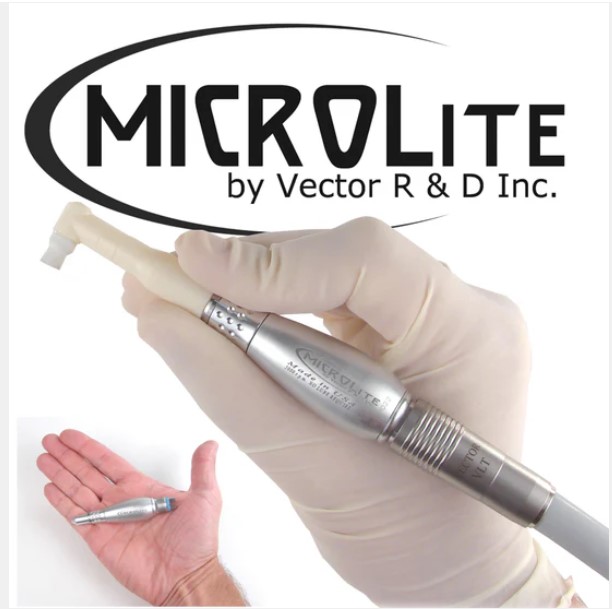
Dental handpieces are an essential part of modern dentistry, enabling precision, efficiency, and patient comfort. Understanding the differences between high-speed and low-speed dental handpieces is crucial for selecting the appropriate tool for various dental procedures. This article explores their distinctions in terms of design, functionality, applications, and maintenance requirements.
What Are High-Speed Dental Handpieces?
Design and Functionality
High-speed dental handpieces operate at speeds ranging from 200,000 to 450,000 RPM, making them ideal for procedures requiring rapid cutting. These handpieces typically use air-driven turbines or electric motors to achieve high rotational speeds. They also incorporate fiber-optic lighting, water cooling systems, and ceramic bearings for enhanced durability and performance.
Applications of High-Speed Handpieces
High-speed handpieces are primarily used for:
-
Cavity preparation – Efficiently removes decayed tooth material.
-
Crown and bridge preparation – Ensures smooth, precise shaping of tooth structures.
-
Tooth sectioning – Facilitates extractions and oral surgeries.
-
Finishing and polishing restorations – Provides a refined surface for aesthetic restorations.
Advantages of High-Speed Handpieces
High-speed handpieces offer several advantages, including faster cutting efficiency, reduced vibration for improved patient comfort, and lightweight, ergonomic designs that minimize hand fatigue. Additionally, the incorporation of a water spray cooling system helps prevent overheating and tissue damage.
Limitations of High-Speed Handpieces
Despite their benefits, high-speed handpieces come with some drawbacks. They have lower torque, making them less effective for heavy-duty cutting. Additionally, they require frequent maintenance due to their high-speed wear and tear and tend to be more expensive than low-speed handpieces.
What Are Low-Speed Dental Handpieces?
Design and Functionality
Low-speed dental handpieces typically operate at 5,000 to 40,000 RPM and use either air-driven motors or electric micromotors for power. These handpieces often feature attachments, such as contra-angle or straight handpieces, allowing them to perform various procedures.
Applications of Low-Speed Handpieces
Low-speed handpieces are versatile tools used for various applications, including caries excavation, polishing and finishing restorations, prophylaxis (teeth cleaning), endodontic procedures, and lab work such as denture adjustments. Their lower speed and higher torque make them ideal for precision tasks that require careful control.
Advantages of Low-Speed Handpieces
Low-speed handpieces provide high torque, making them effective for heavy-duty applications. They also allow greater precision, ensuring better control in delicate procedures. Their durability is another advantage, as they experience less mechanical stress and tend to have a longer lifespan. Additionally, they generate less heat, reducing the risk of thermal damage to teeth.
Limitations of Low-Speed Handpieces
One of the main disadvantages of low-speed handpieces is their slower cutting speed, which can increase the duration of procedures. They are also bulkier in design, making them harder to maneuver in tight areas. Unlike high-speed handpieces, they lack a built-in cooling spray, which can lead to heat buildup during prolonged use.
Maintenance and Care of Dental Handpieces
Proper maintenance of both high-speed and low-speed handpieces is essential for longevity and optimal performance. Below are best practices for their care:
Cleaning and Sterilization
-
Pre-cleaning – Rinse handpieces immediately after use to remove debris.
-
Ultrasonic cleaning – Effectively removes hidden contaminants.
-
Autoclaving – Sterilizes handpieces to eliminate bacterial contamination.
-
Lubrication – Ensures smooth operation and extends the lifespan of bearings and turbines.
Common Issues and Troubleshooting
Some common problems encountered with dental handpieces include loss of speed or power, which may indicate worn-out turbines or clogged air lines. Overheating can result from inadequate lubrication or excessive friction, while unusual noise or vibration suggests damaged bearings or misalignment. Regular maintenance can help prevent these issues and keep handpieces functioning efficiently.
Choosing the Right Handpiece for Your Practice
When selecting between high-speed and low-speed dental handpieces, several factors must be considered. High-speed handpieces are ideal for procedures requiring rapid cutting, while low-speed handpieces are better suited for precision work and polishing. Additionally, durability, maintenance requirements, patient comfort, and cost should be evaluated to determine the most suitable option for a dental practice.
Conclusion
Understanding the key differences between high-speed and low-speed dental handpieces enables dental professionals to optimize their tool selection for specific procedures. Both types of handpieces offer unique benefits, and incorporating the right one enhances precision, efficiency, and patient satisfaction in dental treatments.





Leave a Reply